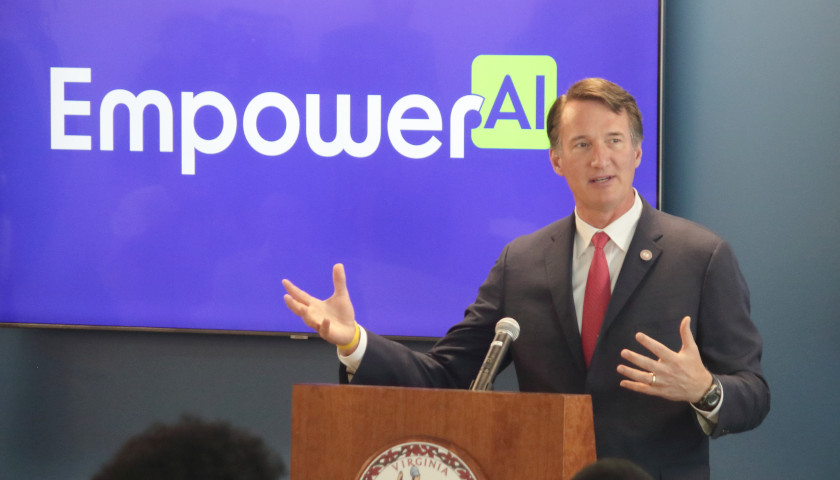Politico last week issued a dire prediction that tax reform on the scale of Reagan’s 1986 schematic was dead on arrival in the U.S. Senate, as Mitch McConnell simply cannot get the votes in a 53-seat majority where the there are four votes to the left and right of the caucus bitterly at odds while Senate Democrats continue to close ranks in an effort to obstruct any solution at all.
This morning, the story has changed significantly, as the White House is quietly and effectively cobbling together a series of tax cuts and reforms that are beginning to take the shape and feel of a serious restructuring.
CNBC was not among the optimists, but over the last two days the tone has shifted remarkably, even if pessimism still latches on:
“Tax reform is not going to happen, but tax cuts are going to happen,” said Tobias Levkovich, chief equity strategist at Citigroup. Instead of slashing the corporate tax rate to the 15 or 20 percent proposed by the president and House Republicans, he said the rate might be more like 25 percent, from the current 35 percent. The average S&P 500 company pays just a little more — about a 27 percent average tax rate — but the tax cut would still be a positive for Republicans, Levkovich said.
From the Politico article:
National Economic Council Director Gary Cohn hinted at progress during a news conference at Trump Tower, saying, “We’ve got a great, I would say, ‘skeleton’ for tax reform.”
“We need the Ways and Means Committee to put some muscle and skin on the skeleton and drive tax reform forward, and it’s our objective to do that between now and the end of the year,” he added.
And Treasury Secretary Steven Mnuchin, appearing alongside Senate Majority Leader Mitch McConnell at a Louisville chamber of commerce event on Tuesday, said tax legislation is “the president’s highest focus.”
So far, the tax reform process has been led by Cohn, Mnuchin, McConnell, House Speaker Paul Ryan, Senate Finance Chair Orrin Hatch, and Ways & Means Committee Chair Kevin Brady — a group that has nicknamed itself the “Big 6” and is eager to project a united front on policy and political questions.
So what effectively does this mean? State governments in higher tax areas such as New Jersey and New York are going to feel a pinch as local and state taxpayers no longer are able to write off their taxes. The mortgage tax deduction cap will ultimately depend on the cap, but could translate into some serious pain further down the road as inflation rises and housing costs increase — thus holding the potential to alter living and work patterns.
Charitable giving and the “border adjustment tax” remain on the table, but the BAT is on life support with groups such as Koch-led Americans For Prosperity clamoring for a quick and painless death. Meanwhile, charitable giving deductions appear to be negotiable… with several conservative organizations and faith-based charities wincing at the prospect of eliminating tax deductions.
The real race is the 2018 midterms. If tax reform takes root and the economy begins growing at 3-4% GDP, Republican fortunes in the U.S. House of Representatives could very well reverse. As it stands today, both chambers are beginning to look over their shoulder as failure to repeal Obamacare and continued Democratic hamstringing begin to take their toll.
Yet it isn’t all shadows and clouds for the Republicans. Tax reform is perhaps one of the most serious and long-lasting portions of the Trump administration’s agenda moving forward.
The Democratic Party — already embroiled in a vicious civil war between establishment liberals and the progressive extremists — is floundering as national fundraising remains in the gutter.
Still reeling from a string of special election defeats, Democrats are on the verge of losing all three of Virginia’s statewide elections thanks to Antifa agitation and the vast unpopularity of the progressive agenda among independents.
Democrats have yet to come up with an effective policy agenda for America, hence the reason they have to rely upon throwing bombs in the Republican camp in an effort to scare independents. The problem remains that the Democratic Party remains rudderless, disorganized, and entirely unpopular among the center-right.
In the choice between Clinton and Trump, voters rejected the devil for the deep blue sea. For Democrats on the shore begging voters to come back, the image on television screens isn’t jobs and happy families, but Antifa mobs and roughed-up reporters.
That’s not a future for working families. Meanwhile, should the Trump administration succeed in pushing for tax reform, and should the broad-based economic recovery continue to pick up steam, the Democrats will find it very difficult to demonstrate an alternative beyond screaming about Russia, North Korea, statues and transgenderism.







